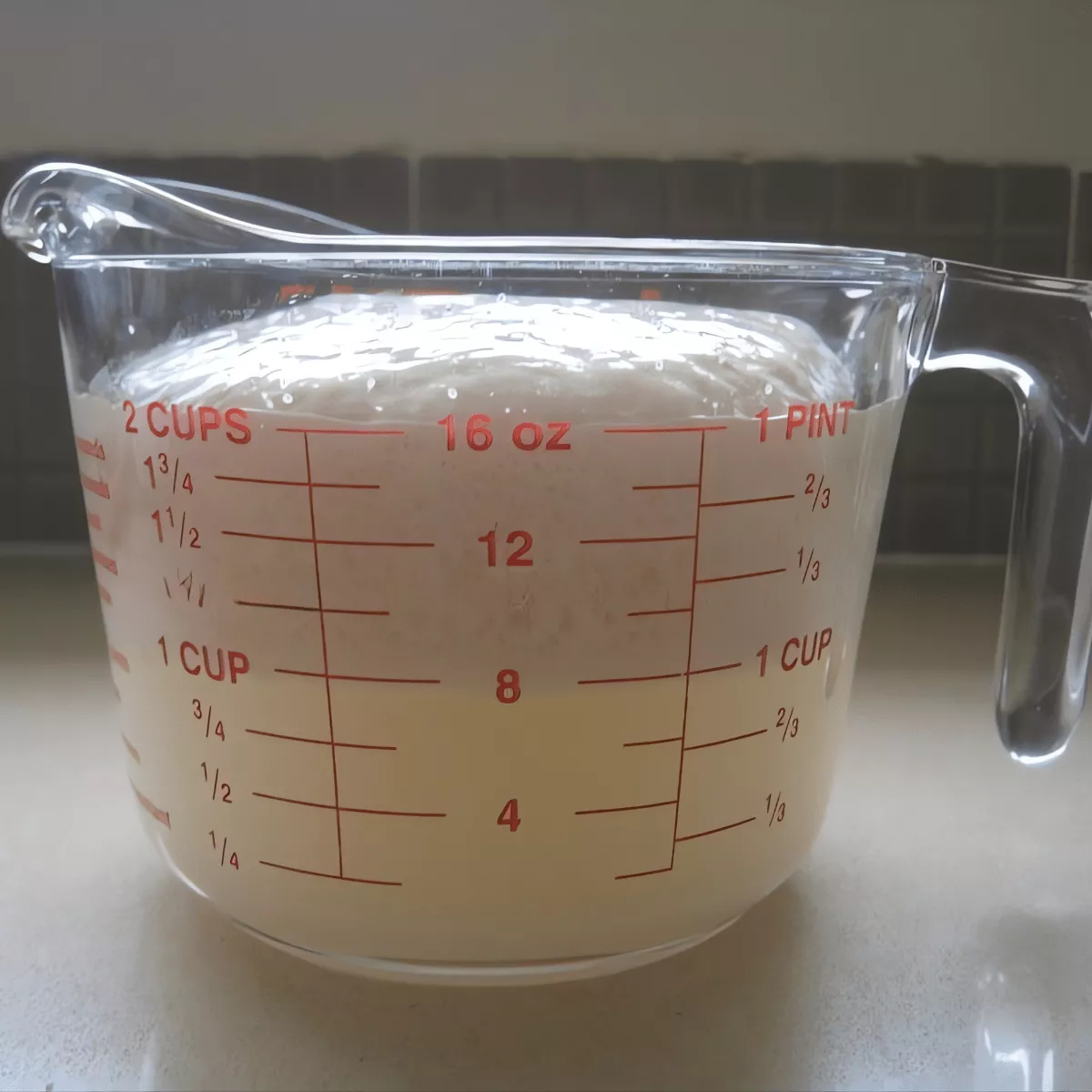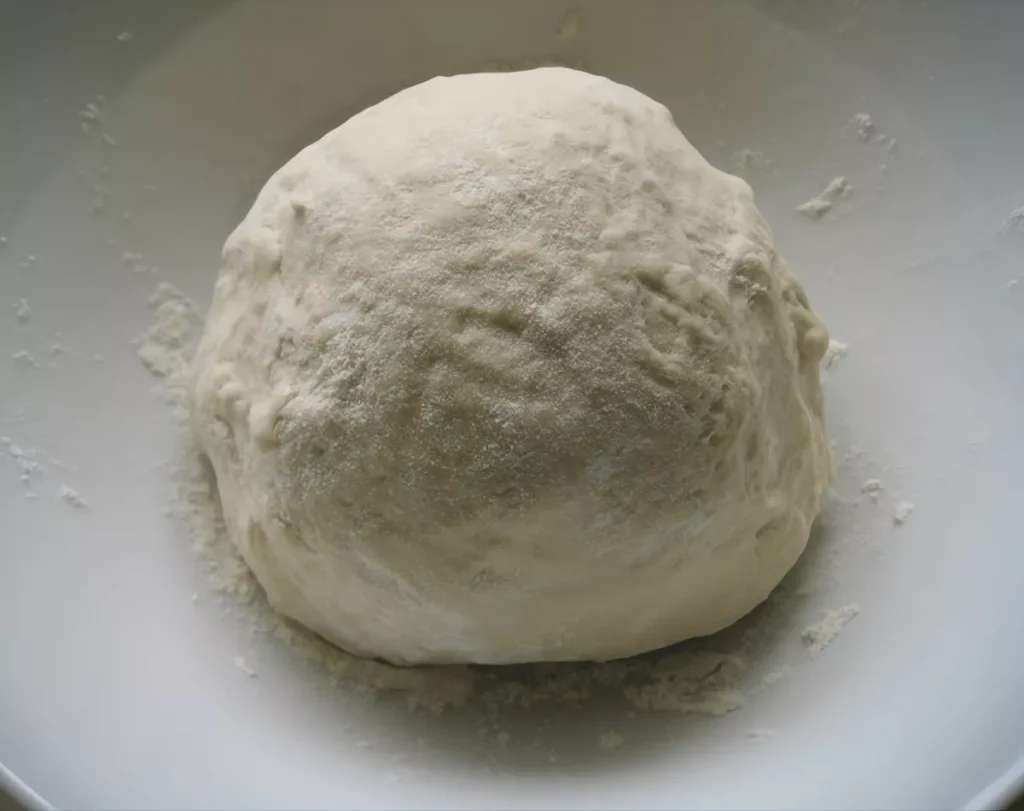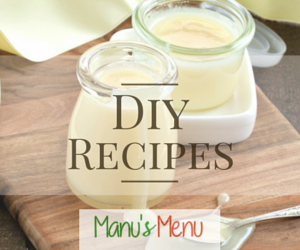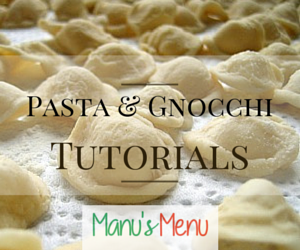Pizza night just got better! Homemade Pizza Dough makes it easy to bake crisp, chewy, golden crusts with pantry staples. No need for takeout when you can make your own at home.

I’ll never forget the first time I ate pizza outside of Italy. I looked at the menu and couldn’t believe my eyes. The topping combinations were, well, let’s just say… interesting. Some of them even made my skin crawl a little!
But of course, everyone is entitled to enjoy their pizza however they like; that’s the beauty of food. However, I do feel it’s important to clear up a few common misconceptions about what an authentic Italian pizza truly is, especially when you’re making it at home with your own homemade pizza dough.
The Secret to a Perfect Italian Pizza with Homemade Dough
In Italy, pizza sauce means tomato sauce. You can add a little salt, extra virgin olive oil, and maybe some oregano, or keep it plain. Go much further, and it no longer feels like a proper Italian pizza sauce. Ketchup or barbecue sauce might be fun on other dishes, just not on pizza.
With the sauce sorted, the cheese follows the same simple rule. Mozzarella is the classic choice, and the real thing matters. Good mozzarella is soft and stretchy with a light, milky flavour, and in the oven it melts evenly instead of turning oily, chewy, or plasticky. I like bocconcini or mozzarella fior di latte as they give a tender, creamy finish, unlike the pre-shredded supermarket kind.
Once the base is set, toppings should stay measured. You can mix and match plenty, but keep them light so they complement the flavours of the base. And no, “half-and-half” pizzas aren’t a thing in Italy. When you bake at home with homemade pizza dough, you’ll see how simplicity makes all the difference.
What Makes Homemade Pizza Dough Worth Making
- Thin, crisp base with a tender crumb and speckled char for a true pizzeria feel at home.
- Keeps well for next-day lunches once baked, since a quick reheat restores crispness and aroma.
- One batch makes round pizzas, tray bakes, or mini pizzettes and works for weeknights and gatherings.
Key Ingredients for Basic Pizza Dough
Flour
Gives structure and elasticity. All-purpose flour works well, while Italian Tipo 00 flour makes the dough softer and easier to stretch.
Yeast
Creates the rise and light texture. Once activated in lukewarm water with sugar, it forms tiny air pockets that keep the dough soft inside.
Olive Oil
Adds flavour and moisture while helping the dough stay supple during kneading. It also gives the crust a light golden finish when baked.
Sugar
Feeds the yeast for an even rise and helps the crust brown without making the dough sweet.
Find the complete list with measurements in the recipe card below.
How to Make Homemade Pizza Dough
Step 1: Dissolve the yeast and sugar in 450 ml – 15 oz. of lukewarm water and set aside in a container that’s at least twice the size of the mixture, allowing the yeast to activate. In the meantime, combine the flour, salt, and extra virgin olive oil in a mixer with a dough hook.

Step 2: Once the yeast mixture is frothy, pour it into the mixer.
Note: The yeast mixture was prepared with half the amount of ingredients.

Step 4: Shape the kneaded dough into a ball, dust it with flour, and place it in a large bowl. Cover the bowl with a dry cloth and leave the dough to rise for at least 2 hours or until it doubles in volume.

Frequently Asked Questions
Yes. After the first rise, cover the bowl tightly and refrigerate for up to 24 hours. Bring to room temperature for 30–45 minutes before shaping.
Yes. Portion after the first rise, wrap well, and freeze for up to 3 months. Thaw overnight in the fridge, then rest at room temperature until pliable.
If the dough isn’t rising, the usual causes are inactive yeast or water that’s too hot or too cold. Make sure the yeast is fresh, use lukewarm water, and let the dough rest in a warm, draft-free spot until it doubles.
No. Hand-kneading on a lightly floured bench for 8–10 minutes produces the same result. Aim for a smooth, elastic dough that springs back slightly.
Extra Help from the Kitchen
Use the Right Bowl – Choose a large glass or ceramic bowl for rising. Metal bowls can conduct too much heat or cold, which affects how evenly the dough ferments.
Cover the Dough Correctly – Use a dry tea towel or lightly oiled cling film to cover the dough. This prevents the surface from drying out as it rises.
Control the Room Temperature – Dough rises best in a warm, draft-free area. If your kitchen is cool, place the bowl in the oven with the light on or near a warm appliance.
Add Flour Gradually – Depending on humidity, the dough may need slightly more or less flour. Add it in small amounts to reach a soft, elastic texture without becoming sticky.
Rest Before Shaping – After the first rise, let the dough rest for 10 minutes before rolling or stretching. This allows the gluten to relax and makes shaping easier.
Check for Readiness – Gently press the dough with your fingertip. If it springs back slowly, it’s ready to shape. This test helps avoid overproofing, which can make the crust dense.
Variations and Twists
Herbed Dough – Add 1 tablespoon of dried oregano, rosemary, or thyme to the flour before kneading. The herbs infuse the dough with a mild aroma that pairs well with mozzarella, tomato, and olives.
Whole Wheat Dough – Replace half the flour with whole wheat flour for a dough that’s slightly denser and full of flavour. It makes a sturdy base, ideal for vegetable toppings such as grilled peppers or zucchini.
Garlic-Infused Dough – Mix 1 minced garlic clove or a little garlic powder into the dough while kneading. It gives a subtle savoury taste and an inviting scent once baked, perfect for simple pizzas like Margherita or Bianca.
Overnight Dough – Prepare the dough the day before and let it rest in the fridge overnight. Slow fermentation improves flavour and texture, creating a light, airy crust.
Authentic Italian Pizza Toppings
Margherita – Add tomato sauce, Italian mozzarella, and basil for a classic Margherita. This simple combination represents the colours of the Italian flag and remains the most traditional choice.
Marinara – Spread tomato sauce with garlic, oregano, and extra virgin olive oil. One of the earliest pizza recipes, it shows how a few ingredients can create great flavour.
Capricciosa – Top the base with tomato sauce, Italian mozzarella, ham, olives, mushrooms, and artichokes. Many chefs add one extra seasonal topping to make their own version of this pizza.
Quattro Stagioni – Arrange tomato sauce, Italian mozzarella, ham, olives, mushrooms, and artichokes in four sections to represent the seasons. Each quarter symbolises spring, summer, autumn, and winter.
Prosciutto Crudo – Use tomato sauce, Italian mozzarella, and prosciutto. Always add the prosciutto after baking to keep its soft texture and delicate flavour.
Prosciutto Cotto – Add tomato sauce, Italian mozzarella, and ham for a simple, comforting choice you’ll find in every Italian pizzeria.
Bresaola or Prosciutto, Rucola e Grana – Add tomato sauce, bresaola or prosciutto, rocket, and shaved Grana Padano. The contrast between cured meat and fresh greens gives this pizza a clean, balanced taste.
Diavola – Combine tomato sauce, Italian mozzarella, and hot salami. The salami bakes directly on the dough, adding gentle heat throughout the pizza.
Funghi – Add tomato sauce, Italian mozzarella, and fresh mushrooms. A simple, earthy pizza that works with champignons or porcini.
Quattro Formaggi – Use tomato sauce, Italian mozzarella, Grana Padano, gorgonzola, and one of ricotta, taleggio, fontina, or provolone. Each cheese melts differently and adds its own depth of flavour.
Salsiccia – Add tomato sauce, Italian mozzarella, and Italian sausage. It’s the only traditional pizza that uses uncured meat, baked directly on the dough.
Tonno e Cipolla – Add tomato sauce, Italian mozzarella, tuna, and onion. A northern Italian favourite with a distinctive flavour combination.
Gorgonzola e Speck or Prosciutto – Add tomato sauce, Italian mozzarella, gorgonzola, and speck or prosciutto. The mild smokiness of the cured meat pairs well with the creamy cheese.
Non-Traditional Toppings
Hawaiian – Add ham and pineapple for a sweet and savoury combination. Although popular elsewhere, this pairing isn’t used in Italian pizza making.
Supreme – Add pepperoni, bacon, capsicum, ground beef, Italian sausage, mushroom, pineapple, and oregano. This style is common outside Italy but not part of its pizza tradition.
Meat Lovers – Combine bacon, pepperoni, ham, beef, Italian sausage, mozzarella, and barbecue sauce. The use of barbecue sauce moves it away from authentic Italian flavours.
Gourmet Pizzas – Add mixed or experimental ingredients such as figs, truffle oil, or chicken. These modern versions can be creative, but don’t reflect classic Italian recipes.
Storage and Shelf Life
Store the dough in a lightly oiled, airtight container in the refrigerator for up to 3 days, or freeze well-wrapped portions for up to 3 months; thaw overnight in the refrigerator until workable.
Store baked pizza in an airtight container in the refrigerator for 2 days. For the best texture, reheat on a preheated tray or stone at 180°C – 350°F until the base is crisp again.
Delicious Dishes You Can Make with Homemade Dough

Homemade Pizza Dough Recipe
Pizza night just got better! Homemade Pizza Dough makes it easy to bake crisp, chewy, golden crusts with pantry staples. No need for takeout when you can make your own at home.
Ingredients
- 800 g – 1.75 pounds – 3 ½ cups of all-purpose flour
- 4 tbsp of extra virgin olive oil
- 1 ½ tsp of salt
- 450 ml – 15 oz. of water
- 1 sachet – 7 g – ¼ oz dry yeast
- 1 tbsp of sugar
Instructions
-
Dissolve the yeast and sugar in 450 ml – 15 oz. of lukewarm water and set aside in a container that’s at least twice the size of the mixture, allowing the yeast to activate. In the meantime, combine the flour, salt, and extra virgin olive oil in a mixer with a dough hook.
-
Once the yeast mixture is frothy, pour it into the mixer.
Note: The yeast mixture was prepared with half the amount of ingredients.
-
Knead the dough for a couple of minutes until it looks smooth and feels soft and elastic to the touch. If you do not have a mixer, knead the ingredients by hand for 5 to 10 minutes.
-
Shape the kneaded dough into a ball, dust it with flour, and place it in a large bowl. Cover the bowl with a dry cloth and leave the dough to rise for at least 2 hours or until it doubles in volume.




















Leave a Reply